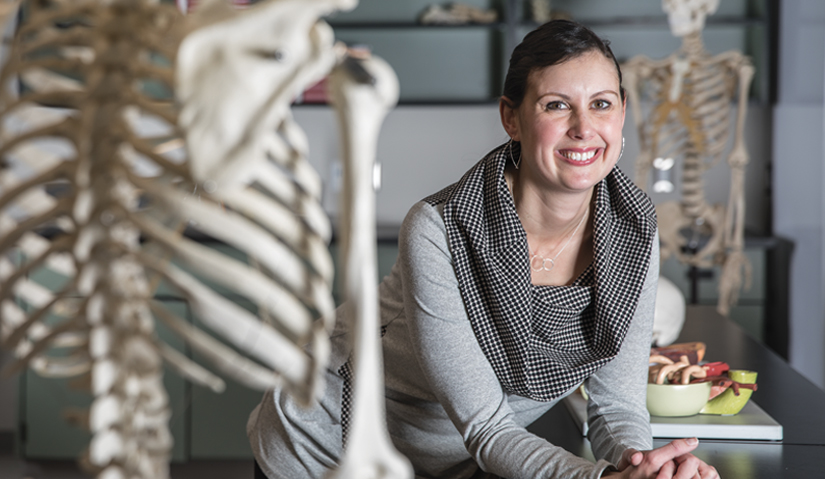KINESIOLOGY & HEALTH SCIENCE

KINESIOLOGY AND HEALTH SCIENCE Assistant Lecturer Nicolette Richardson has taken the teaching of anatomy to the next level by introducing state-of-the-art dissection software into the courses she teaches.
The software is “really impressive,” says Richardson. “It allows you to lift layers away, or rotate structures to get three-dimensional views.” It also allows for home study at the student’s convenience, eliminating the need to book laboratory time: “accessibility is so important in a school with many commuters, who are often working outside of school. It’s great to give them that option.”
In addition to classroom lectures, students conduct dissection work in labs - and virtual dissection offers them even more experiential learning, something Richardson sees as critical.
“Research tells us that the more active students can be in the learning process, the more they’ll be able to understand and recall the material.”
From lecture recording to online quizzes about anatomical structure, Richardson is always thinking of new ways in which technology can improve the learning process outside the lab as well as in it. In one of her courses, students can perform a physiology experiment – mixing solutions and recording results, all digitally. Currently, she and colleague Loriann Hynes are looking to bring a lifelike synthetic cadaver into the lab. “The technology is incredibly useful,” she says. “Now, we’d love to have that additional hands-on component.”
